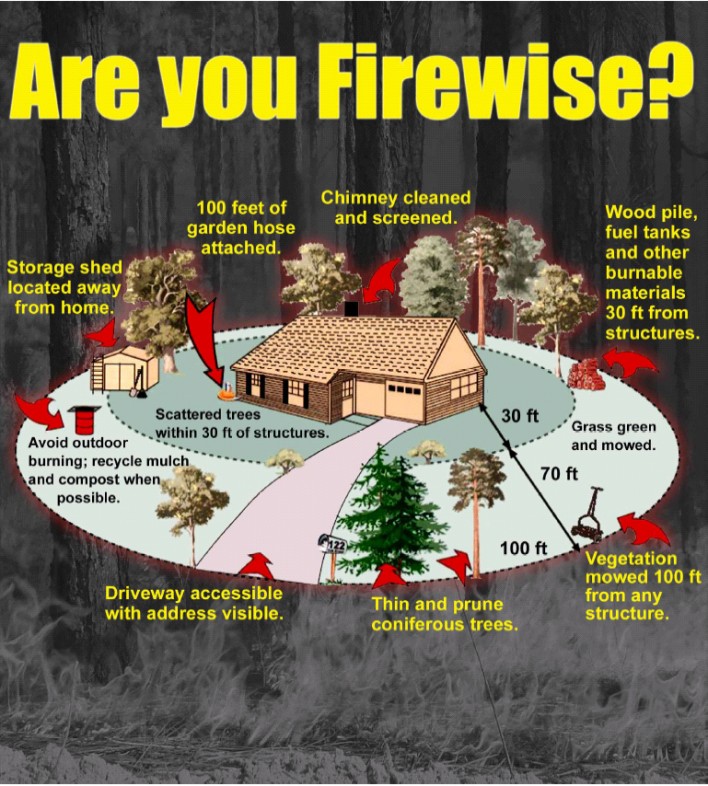FireWise
Living in wooded areas (WUI – Wildland Urban Interface) or even dense sub/urban areas brings with it a certain level of danger from fire. Many options are available when building a new home or even when renovating an existing home to safeguard your property and memories from damage. Everything from landscaping to building materials to detailing and systems affects how your home performs in a fire. MANIFOLD encourages all of our clients living in WUI areas to carefully consider FireWise design; we were recently recognized for our work with the Northern Colorado Rebuilding effort in the wake of the High Park fire.
Important items to consider are:
- Landscaping
- Non-cobustable exterior finishes
- Tempered Glass windows
- Sprinklers (Interior and/or Exterior)
- Controled Ventilation System
- Fire-safe Detailing
Living in the Wildland Urban Interface (WUI)
Catastrophic property losses would not occur if fires happened in remote, uninhabited areas. But many of us choose to live in an area known by fire managers as the wildland urban interface, or WUI (pronounced “WOO WEE”). The WUI is where vegetation (trees, scrub, grassland), people, and structures exist together. Living in the WUI increases the likelihood that fire can damage one’s home or property because brush, grass, and forest fires can easily spread from the wildland to one’s home. Conversely, human sources of ignition, such as escaped debris burning, can spread to nearby flammable vegetation and threaten neighboring properties. Wildfire hazard in the WUI should be taken seriously and there are many ways to reduce the risk of home ignition.
How homes survive
Factors such as terrain/topography, weather patterns and climate, fire history, fuels and landscape, building materials, water resources, and development patterns influence wildfire risk in the WUI. Fortunately, many of these factors – fuels and landscape, building materials, and development patterns – can be modified to reduce the likelihood of home ignition during a wildfire event. Research also shows us which modifications to homes and properties are most effective in increasing a home’s survivability during a wildfire. Firewise principles embrace this science and make specific recommendations for landscaping and construction decisions.
Make it Firewise
What lies in a fire’s path can become “fuel” – this includes homes, decks, fences, trees, ornamental shrubs and mulch. Make the right choices about new and existing development and landscapes by following Firewise principles.
Building safer from the start
By building safer from the start, communities of tomorrow have a better chance of surviving – and thriving – in a fire-prone environment.
